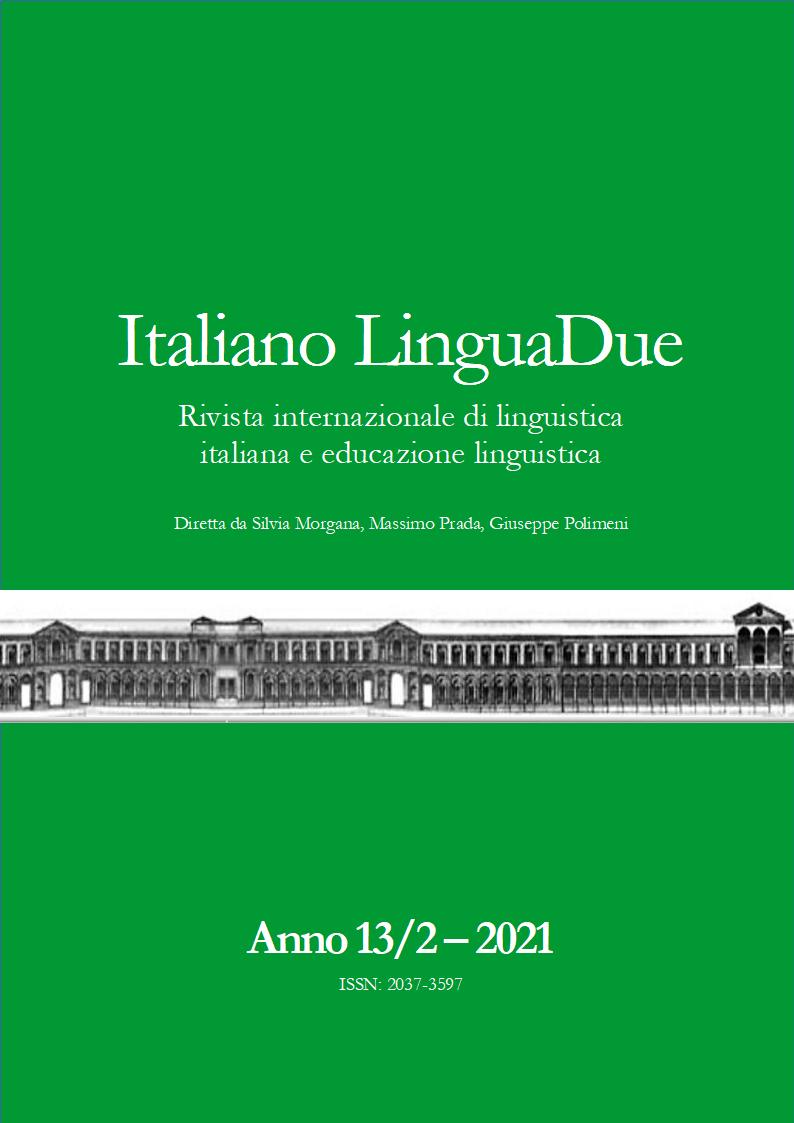«IL ROMANZO D’UN MAESTRO» DI EDMONDO DE AMICIS: PRIME INDAGINI SULLA LINGUA E LA SUA EVOLUZIONE
DOI:
https://doi.org/10.54103/2037-3597/17147Abstract
L’articolo propone un’indagine linguistica sulla prima metà dell’opera de Il romanzo d’un maestro di Edmondo De Amicis. Dal punto di vista grafico, fonetico, morfologico, lessicale e infine sintattico, si opera un confronto tra l’edizione a stampa del 1900 (ultima vivente l’autore), con la prima edizione del 1890 e una versione autografa del testo, quest’ultima conservata presso la Biblioteca Civica L. Lagorio di Imperia. Nell’articolo si inquadrano i mutamenti intercorsi all’interno della teoria e della prassi linguistica del Nostro oltreché del panorama linguistico e della riflessione grammaticografica e lessicografica a lui coevi. Le scelte linguistiche di De Amicis sono state quasi sempre confrontate anche con quelle della Quarantana del Manzoni: il Nostro è sì manzoniano, ma non pedissequo, e con una autonomia di vedute nella formulazione di proposte linguistico-didattiche caratterizzate dall’uso del fiorentino coevo che si stempera nel toscano, nei classici e, sia pure limitatamente, nell’uso del dialetto. Nel Romanzo d’un maestro è dunque presente un eclettismo linguistico conciliativo, ravvisabile anche nelle pagine dell’Idioma gentile: nonostante il modello manzoniano risulti essere il preferito, tuttavia la sua apertura verso modelli alternativi smorza le più radicali implicazioni del pensiero del Maestro, dando ragione a chi ha riconosciuto il carattere moderato delle scelte linguistiche del Nostro.
Il romanzo d’un maestro by Edmondo De Amicis: preliminary investigations of language and its evolution
The paper proposes a linguistic investigation of the first half of Il romanzo d’un maestro by Edmondo De Amicis. From the graphic, phonetic, morphological, lexical and syntactic point of view, a comparison is made between the printed edition from 1900 (the last published during the author’s lifetime), with the first edition from 1890 and an autographed version of the text, conserved at the L. Lagorio Civic Library in Imperia. The article frames the changes that took place within De Amicis’s theory and linguistic practise as well as in the linguistic landscape and in the grammatical and lexicographic reflection of his contemporaries. The linguistic choices of De Amicis have almost always been compared with those of Manzoni’s Quarantana: De Amicis is Manzonian, but not slavish, and with an autonomy of views in the formulation of linguistic-didactic proposals characterized by the use of contemporary Florentine which dissolves into classic Tuscan and, to a limited extent, in the use of the dialect. In Romanzo d’un maestro there is therefore a conciliatory linguistic eclecticism, also recognizable in the pages of Idioma gentile: although the Manzonian model is the preferred one, its openness towards alternative models dampens the most radical implications of the Master’s thought, in agreement with those who recognized the moderate character of De Amicis’s linguistic choices.




